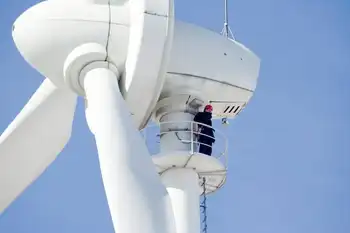Wood creates golden opportunity: creating power, fertilizer, roads
By Knight Ridder Tribune
Protective Relay Training - Basic
Our customized live online or in‑person group training can be delivered to your staff at your location.

- Live Online
- 12 hours Instructor-led
- Group Training Available
The key to the formula, according to a team of students and researchers at North Carolina State University, can be found in wood ash. That has made unlikely partners of the U.S. Forest Service, the state's road builders and a wood-burning electric plant just outside New Bern, N.C.
"Much of what we're working with is considered waste," said Lucian Lucia, an associate professor of wood and paper science at NCSU. "But there is a lot of money to be made here."
The goals that bind these groups took an important step forward this summer when two students joined a project at NCSU. Their task was to find alternate uses for the growth and underbrush that blankets much of the forests in North Carolina coastal counties.
More formally known as Pocosin biomass, the abundant vegetation presents a constant problem for foresters. At its worst, the growth becomes fuel for uncontrolled fires that can ravage huge stands of pine, cypress and cedar. Two of the most significant stands are just south of New Bern.
The Croatan National Forest, covering about 146,000 acres, is managed by the U.S. Forest Service; Hofmann Forest, about 80,000 acres, is managed by NCSU. The two organizations have talked for years about better ways to manage the growth. "A controlled burn isn't very practical," said Glenn Catts, who works as the Hofmann Forest liaison for NCSU.
"The margin for error is just too thin, and then the fire takes off." But the conversations were in a lull until NCSU picked up a $250,000 federal grant a few months ago. The money will be used to modify a machine that can harvest large swaths of undergrowth. If the first attempts go as planned in the fall, the wood will be scooped into large trucks and taken up the road to New Bern.
Just west of the city is Craven County Wood Energy, where bulldozers crawl over huge mounds of chipped and shredded wood. The wood fuels boilers that feed steam-driven turbines. The burn isn't free of pollutants, but it's cleaner than burning coal or natural gas, said Ivan Urlaub, executive and policy director for the North Carolina Sustainable Energy Association.
The 50-megawatt facility is modest in size, but Wade Tippett, fuel manager at the plant, said cuttings from the forests would be a significant addition. "But it's not just those forests," Tippett said. "There are just megatons of woody material in this part of the state. It grows back quickly. It's all potentially valuable."
But the value to Javon Carter and Charlie Lawrence III goes well beyond using wood to produce electricity. The seniors were selected for a National Science Foundation summer program at NCSU. Carter attends Winston-Salem State University; Lawrence goes to Fayetteville State.
When they were asked to find other uses for the cuttings, Carter began looking at ways to extract oils such as eucalytptol - a colorless liquid used in pharmaceuticals. The two also cooked up mixes of water and wood ash, called black liquor, that can be mixed with hog waste. The resulting Wonder Poop, as it's dubbed, is an effective fertilizer.
Lucia thinks he could market it today, although he has no immediate plans to do so. The most intriguing payoff for Carter, Lawrence and Lucia is the potential use of ash and concrete. NCSU spends about $15,000 per mile to maintain roads in Hofmann Forest that are constructed largely of fist-sized rock.
Using mostly leftover ash, they could build those same roads at a fraction of the cost. The Romans used volcanic ash in their concrete, which helps explain why engineers at the state Department of Transportation quickly dismissed Lawrence's effort to use the lighter fly ash produced by Craven County Wood. But the gritty "bottom ash" looked promising.
"At least it looked good until we put pressure on it," Lawrence said. "Then it fell apart."
Adding just a small amount of concrete, about 6 percent, to the mix of bottom ash made a big difference. That mixture is probably strong enough to build greenways, bike paths or even parking lots, under the right conditions.











